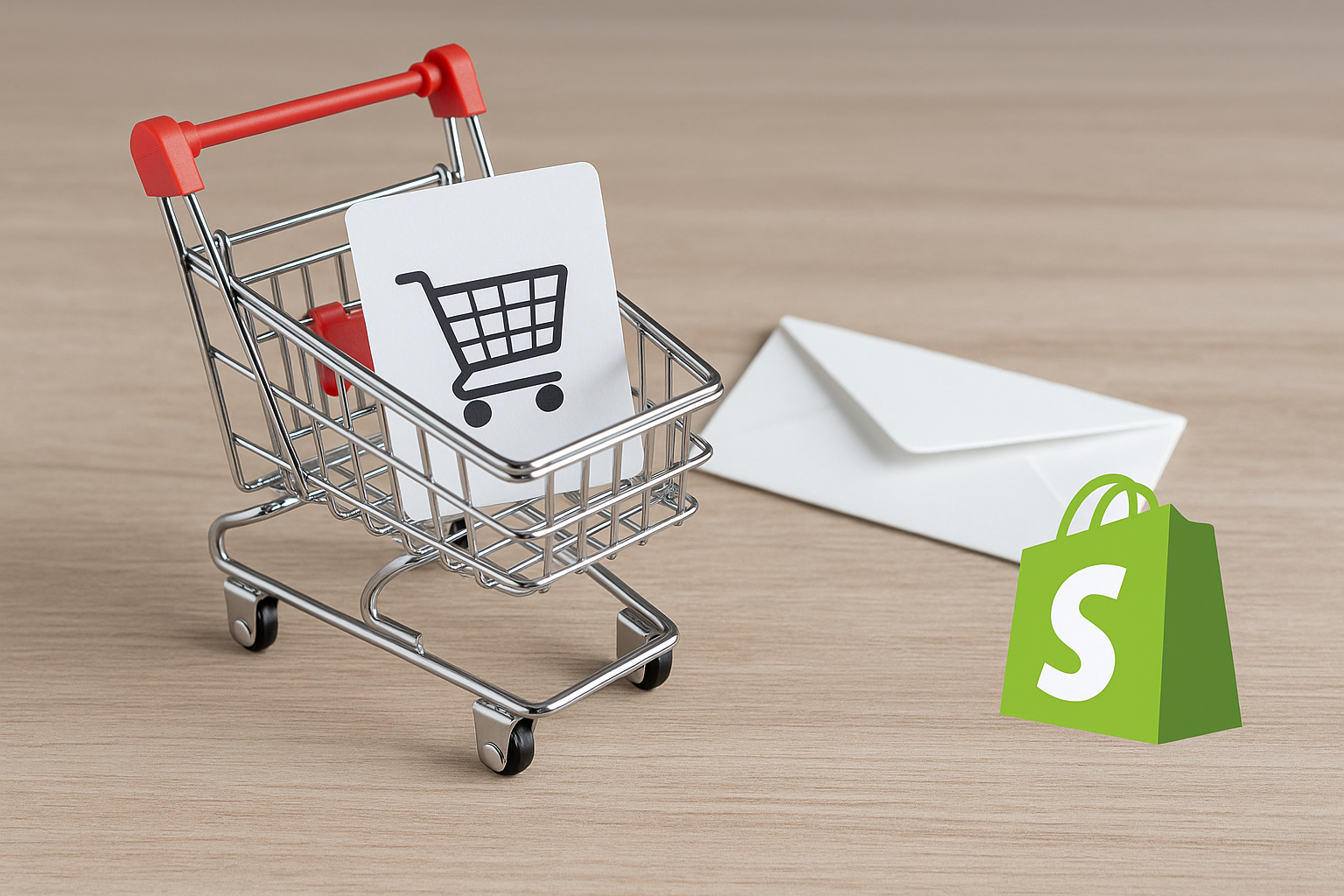Abandoned Cart Recovery: Strategies to Reclaim Lost Sales on Shopify
Cart abandonment is a silent profit killer in the world of eCommerce. On Shopify, it’s an issue that nearly every store owner faces. Imagine this: a potential customer adds products to their cart, gets to the checkout page, and disappears without purchasing. Frustrating, right?
But here’s the good news: abandoned cart recovery isn’t just possible—it’s incredibly effective when done right. With the right blend of automation, timing, and personalization, you can transform lost opportunities into loyal customers. And in today’s Shopify ecosystem, that’s not just a possibility—it’s a strategic necessity.
Let’s dive into a treasure trove of smart, tested, and profitable strategies you can implement right now to recover abandoned carts and grow your bottom line.
The Psychology Behind Cart Abandonment
Understanding why people abandon their carts is half the battle. Here are the most common culprits:
- Unexpected shipping costs
- Complicated checkout process
- Lack of trust in payment security
- Window shopping or price comparison
- Slow page load or technical issues
- No guest checkout option
By identifying these barriers, Shopify store owners can start building recovery strategies that directly address these pain points.
Understanding the Shopify Checkout Funnel
Before fixing cart abandonment, it’s vital to understand where drop-offs occur. Shopify’s analytics can help you break down the checkout funnel:
- Add to Cart
- Initiate Checkout
- Enter Shipping Info
- Enter Payment
- Complete Purchase
Each of these steps represents a possible leak in your funnel. Identify where customers are leaving and optimize from there.
Data-Driven Cart Recovery
Numbers don’t lie. With tools like Shopify Analytics, Google Analytics, and third-party apps like Hotjar or Lucky Orange, you can visually track cart behavior, scroll depth, exit pages, and bounce rates.
What do you look for?
- High drop-offs at the shipping cost stage? Consider free shipping.
- Large exits on payment entry? Add trust badges or more payment options.
- Lots of mobile users abandoning carts? Improve your mobile UX.
Let data steer your abandoned cart recovery decisions.
Setting Up Shopify Cart Abandonment Emails
Shopify lets you automate a follow-up email to users who leave their carts. But a generic email won’t cut it anymore. Here’s how to make it work:
- Personalize it: Include the customer’s name and product details.
- Send multiple emails: Use a series of 2–3 emails.
- Include images of abandoned products: Visuals matter.
- Add a clear CTA: “Return to Cart” or “Complete Purchase”
Shopify’s built-in email tools or platforms like Klaviyo or Omnisend can make this process seamless.
Email Subject Lines That Convert
Your recovery email is worthless if it’s never opened. Subject lines are the gatekeepers. Here are examples proven to work:
- “Did you forget something?”
- “We saved your cart for you!”
- “Still thinking it over? Here’s 10% off”
- “Hurry! Your cart is about to expire”
Be personal, create urgency, and spark curiosity.
Best Time to Send Abandonment Emails
Timing is everything. Here’s a recommended flow:
- First email: 1 hour after cart abandonment
- Second email: 12–24 hours later
- Third email: 48 hours later with a final offer
Experiment and A/B test, but this cadence tends to balance urgency with subtlety.
Using SMS for Cart Recovery
SMS open rates are over 95%, making it a brilliant complement to email. Shopify apps like SMSBump or Postscript allow you to send real-time reminders.
Make your message snappy:
“Hey [First Name], you left [Product Name] behind. Tap here to finish your order 👉 [Link]”
Always get permission and follow TCPA compliance rules.
Mobile Optimization Matters
A slow, clunky mobile checkout is the death of conversion. Ensure:
- Fast loading speed (under 3 seconds)
- Large, tappable buttons
- Autofill enabled
- Easy mobile payment (Shop Pay, Apple Pay, Google Pay)
Google reports that 53% of mobile users abandon sites that take over 3 seconds to load. Shopify themes are generally mobile-responsive, but test frequently.
Creating Urgency with Limited-Time Offers
Adding scarcity fuels action. Consider:
- Countdown timers in emails
- Flash discounts (expires in 24h)
- Limited inventory notices
Shopify apps like Hurrify or Countdown Timer Bar can help build urgency effortlessly.
Offering Incentives to Return
Give shoppers a reason to come back:
- Discount codes (10–15% off)
- Free shipping
- Free gift with purchase
- Loyalty points via apps like Smile.io
These little nudges can be the difference between an abandoned cart and a confirmed sale.
Personalizing the Recovery Experience
Leverage Shopify’s customer data and behavior insights:
- Recommend related products
- Show reviews specific to their abandoned product
- Remind them of why they added the product in the first place
Personalization can increase recovery rates by up to 30%.
A/B Testing Your Campaigns
Don’t guess—test. Try variations of:
- Subject lines
- Timing
- Copy length
- CTA buttons
- Offer types
Platforms like Klaviyo make split-testing seamless.
Social Proof to Win Back Shoppers
“95% of buyers read reviews before purchasing.”
Add customer testimonials, product ratings, or UGC (user-generated content) to your emails or cart page to build trust and remove hesitation.
Retargeting Ads for Cart Abandonment
Install Facebook Pixel and Google Ads conversion tags on your Shopify store to launch retargeting campaigns. These show ads only to users who visited or abandoned the cart.
Pro tip: Use dynamic product ads that show the exact product they left behind.
Exit-Intent Popups
When users try to leave your site, show a popup offering:
- A discount
- Free shipping
- Reminder of cart items
Tools like Privy, OptiMonk, or Justuno work well on Shopify.
Push Notifications for Recovery
Browser push notifications can ping users even after they’ve left your site—without needing email or phone numbers.
Apps like PushOwl make it easy to set these up in Shopify.
Segmenting Your Abandoned Cart Audience
Everyone isn’t the same. Segment users by:
- Cart value
- Returning vs new customer
- Time of abandonment
- Device used
Send tailored messages based on what matters most to them.
Combining Email + SMS + Push
A multi-channel recovery campaign outperforms any single channel. Combine email, SMS, and push notifications to maximize your reach and conversions.
Example flow:
- 1 hour: Email
- 3 hours: SMS
- 24 hours: Push notification
Using Shopify Apps for Cart Recovery
Some powerful tools to consider:
- Klaviyo – advanced email flows and segmentation
- SMSBump – SMS campaigns
- PushOwl – web push notifications
- ReConvert – thank you pages and upsell recovery
- Privy – popups and email capture
Integrating these can automate 90% of your recovery efforts.
Designing an Effective Cart Recovery Email
Essentials of a great email:
- Personalized greeting
- Image of the abandoned product
- Price and description
- One CTA (return to cart)
- Offer or incentive
- Trust badges (secure checkout)
Keep it clean, short, and scannable.
Avoiding Spam Filters
To ensure email deliverability:
- Avoid spammy words like “FREE!!!”
- Use a verified domain email (not @gmail.com)
- Keep HTML simple
- Use double opt-in
Apps like Mailgun or Postmark help with technical email issues.
Tracking Cart Recovery Metrics
Track these KPIs:
| Metric | Why it Matters |
|---|---|
| Cart Abandonment Rate | Measures problem scale |
| Recovery Rate | Direct impact of your strategies |
| Conversion Rate | From recovered carts to orders |
| Email Open/Click Rates | Evaluate email performance |
| ROI from Incentives | Profitability of discounts |
Use Shopify reports and Klaviyo dashboards for insights.
Common Mistakes to Avoid
- Spamming customers with too many messages
- Not testing recovery emails
- Ignoring mobile optimization
- Offering no incentive or weak CTAs
- Failing to A/B test subject lines
Legal and Ethical Considerations
Stay compliant with:
- GDPR (for EU users)
- CAN-SPAM Act (US)
- TCPA (for SMS in US)
Always get consent and offer easy opt-outs.
Case Study: Shopify Store Success
Brand: LuxGlow Skincare
Before implementing recovery strategies, LuxGlow had a 78% cart abandonment rate. After deploying:
- Email + SMS flows via Klaviyo
- Retargeting ads
- Exit-intent popups
…they recovered over $56,000 in sales in 60 days and dropped cart abandonment to 54%.
FAQs
What’s a good cart abandonment recovery rate?
15-20% is average. With strong strategies, you can reach 30%+.
Can I use Shopify’s default email system?
Yes, but tools like Klaviyo or Omnisend offer better customization and tracking.
Is SMS better than email?
SMS has higher open rates, but email allows more content. Use both for best results.
Should I always offer discounts?
Not necessarily. Start without discounts; offer them if users don’t convert after the first reminder.
How often should I email about abandoned carts?
Ideally, send 1–3 emails spaced over 48 hours.
Are retargeting ads expensive?
They’re cost-effective if properly targeted. Focus on high cart value users.
Conclusion
Abandoned carts are a reality of Shopify eCommerce, but they don’t have to mean lost revenue. With the right strategies—from emails and SMS to personalization and retargeting—you can turn “almost sales” into real profits.
Start small, track your results, and scale what works. The power to recover thousands in lost revenue is right at your fingertips.

